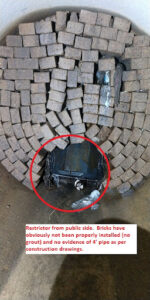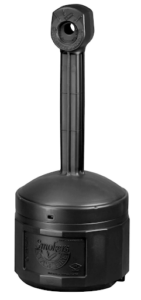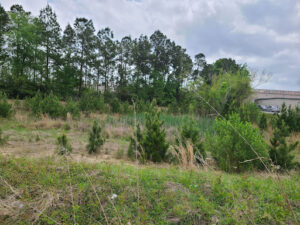 If you live on the Gulf Coast (if you’re reading this I assume you do) then you know that there are a multitude of outdoor activities to be enjoyed by all. Fishing, surfing, boating, and lounging at the beach just to name a few. But it’s not all fun and games in paradise.
If you live on the Gulf Coast (if you’re reading this I assume you do) then you know that there are a multitude of outdoor activities to be enjoyed by all. Fishing, surfing, boating, and lounging at the beach just to name a few. But it’s not all fun and games in paradise.
Every year in June we kick off our annual hurricane season which runs through November. This marks a time to get organized and prepare for the potential of lost power, lackof drinking water, and property damage that is part and parcel of living in an area susceptible to hurricanes.. And while that sounds scary, with proper preparation it doesn’t have to be.
In the military they call it PPPPPP, which stands for Proper Planning Prevents Piss Poor Performance. In the case of our household that means keeping a supply of non-perishable foods, extra drinking water, a generator and fuel, etc…But what about the exterior of your property? Not many people consider how to mitigate or prevent damage caused by drainage issues. But with a little forethought and understanding we can keep our drainage systems flowing and ready for the next tropical storm or hurricane.
I think it goes without saying (but I’ll say it anyway) that if the drainage system has been properly maintained throughout the year then there should be no need to take any additional measures. But in my experience this is rarely the case. And while most property managers I know are well intentioned, they are pulled in too many directions to dedicate the time and thought this maintenance requires. So now you’re probably asking yourself how much time and thought does it really take? Well, without a thorough understanding of the drainage system and how it works you could spend countless hours and dollars with nothing to show for it. Let me give you an example.
A couple of years ago post hurricane Harvey I got a call from an old customer whose company was using another company for their stormwater needs. She knew me from past experiences with a company she used to work for. The problem she was having was flooding in the truck wells of her commercial property every time it rained. So of course she called the other company, and after looking at the property they decided that the storm drains needed to be jetted out. Believing them to be experts she agreed and had them jet the lines out. Upon the next rain event the truck wells flooded again.
Problem not solved! This is when she called me. My investigation started not on-site but with the drawings. You see, my experience tells me that because there is no detention on-site the engineer most likely oversized the underground drainage to accommodate for detention requirements in lieu of a detention pond. I also know that you can use the parking areas and truck wells as detention as well. But to do so means a restrictor to hold that water back and pay it out slowly (24-48 hrs) to the city storm sewer system. So a cursory review of the drawings and I confirm the above to be true and have located the outfall with 4 inch restrictor pipe. By the way, as stated earlier, the on-site drainage pipes are oversized and so it is highly unlikely that this system would need to be cleaned out, and so not where I would start. Instead I went straight to the outfall, suspecting a problem with the restrictor. What I found was a little surprising.
You know those plastic outdoor smoking receptacles you often see at stadiums and airports?
 Somehow the bottom portion made its way into the drainage system. And it just so happens that that bottom piece fit perfectly into what was supposed to be a restrictor but ended up being an area where the bricks were simply left out to accommodate the drainage. That blockage reduced the drain time to about 10 days. Much too long, especially given that any additional rain events only exacerbate the problem. The solution was simply to remove the blockage and rebuild the restrictor properly.
Somehow the bottom portion made its way into the drainage system. And it just so happens that that bottom piece fit perfectly into what was supposed to be a restrictor but ended up being an area where the bricks were simply left out to accommodate the drainage. That blockage reduced the drain time to about 10 days. Much too long, especially given that any additional rain events only exacerbate the problem. The solution was simply to remove the blockage and rebuild the restrictor properly.
So in this case the problem was solved at a fraction of the cost of (unnecessarily) jetting the lines out. I tell you this story to highlight the fact that drainage issues require an experienced individual with a thorough understanding drainage systems. In other words; Don’t go it alone! Even those claiming to know sometimes don’t.
So what can you do to alleviate these types of issues before the next big storm? Let’s take a look at some ideas.
- Maintain your detention pond: Detention ponds require maintenance just like your front yard. They need to be mowed and fertilized. For more information on pond maintenance click here. In preparation for heavy rains and potential flooding we need to focus on the outfall and any blockage or potential for blockage. This could be debris on a trash screen to overgrown vegetation or even trees blocking the pipe. The pond below is a good example of an overgrown pond (Note the trees. Woody growth is not allowed in detention ponds). This one also had a large willow tree right in front of the outfall pipe. These trees and any blockage or debris need to be removed.
- Clean out stormwater quality devices: Whether a screen on a detention pond, hydrodynamic separator, or inlet based basket device, make sure these systems are cleaned out and ready for the storm. While these systems are typically designed to have some overflow incorporated into the design, they can clog in extreme events, blocking your last defense against flooding. You can mitigate this by making sure they are functioning properly and clean before the storm. They will most likely need service after as well so don’t forget to check up on these systems when the water recedes.
- Housekeeping: Removing any trash from the property and securing dumpsters is a simple idea that’s often overlooked. But if we understand that all loose trash and debris will be migrating toward the drainage inlets and swales it totally makes sense. You can clean up the outfall structures but as that trash moves toward them they can restrict or block the flow entirely. And best of all, it doesn’t cost much to clean up the property. And your tenants will appreciate the effort.
 Keep natural drainage paths clear: One more story. Back to hurricane Harvey. Being in this industry, I, of course, took my own advice and cleaned up my yard, secured loose items, and removed any debris and thatch from my yard. But one thing I didn’t consider was the natural drainage paths on my property. You can see yours during the next heavy rain, but you’ll need an umbrella because these drainage paths are often hard to see unless there is some flow, and that means rain. Once you’ve established these flow paths pay careful attention to fences, sidewalks, and any other areas that can get built up with thatch and block the natural drainage. So during the hurricane I went outside (several times) to check on my property only to find that my wooden gate to the back yard was inundated with debris, restricting the natural flow toward the back yard. The result was water in my front yard rising almost to my front door. The solution was simple; prop the door open to allow the water to flow. Pretty simple solution. But sometimes it’s the simple ones that get overlooked.
Keep natural drainage paths clear: One more story. Back to hurricane Harvey. Being in this industry, I, of course, took my own advice and cleaned up my yard, secured loose items, and removed any debris and thatch from my yard. But one thing I didn’t consider was the natural drainage paths on my property. You can see yours during the next heavy rain, but you’ll need an umbrella because these drainage paths are often hard to see unless there is some flow, and that means rain. Once you’ve established these flow paths pay careful attention to fences, sidewalks, and any other areas that can get built up with thatch and block the natural drainage. So during the hurricane I went outside (several times) to check on my property only to find that my wooden gate to the back yard was inundated with debris, restricting the natural flow toward the back yard. The result was water in my front yard rising almost to my front door. The solution was simple; prop the door open to allow the water to flow. Pretty simple solution. But sometimes it’s the simple ones that get overlooked.
Don’t wait until the storm is approaching to get ready. You will undoubtedly have much too much to do in the days before the storm. So the time to prepare your drainage system is now, before hurricanes are on the horizon. We’re here to help. Let us provide you with a no cost site assessment to guide you in the right direction the first time!
